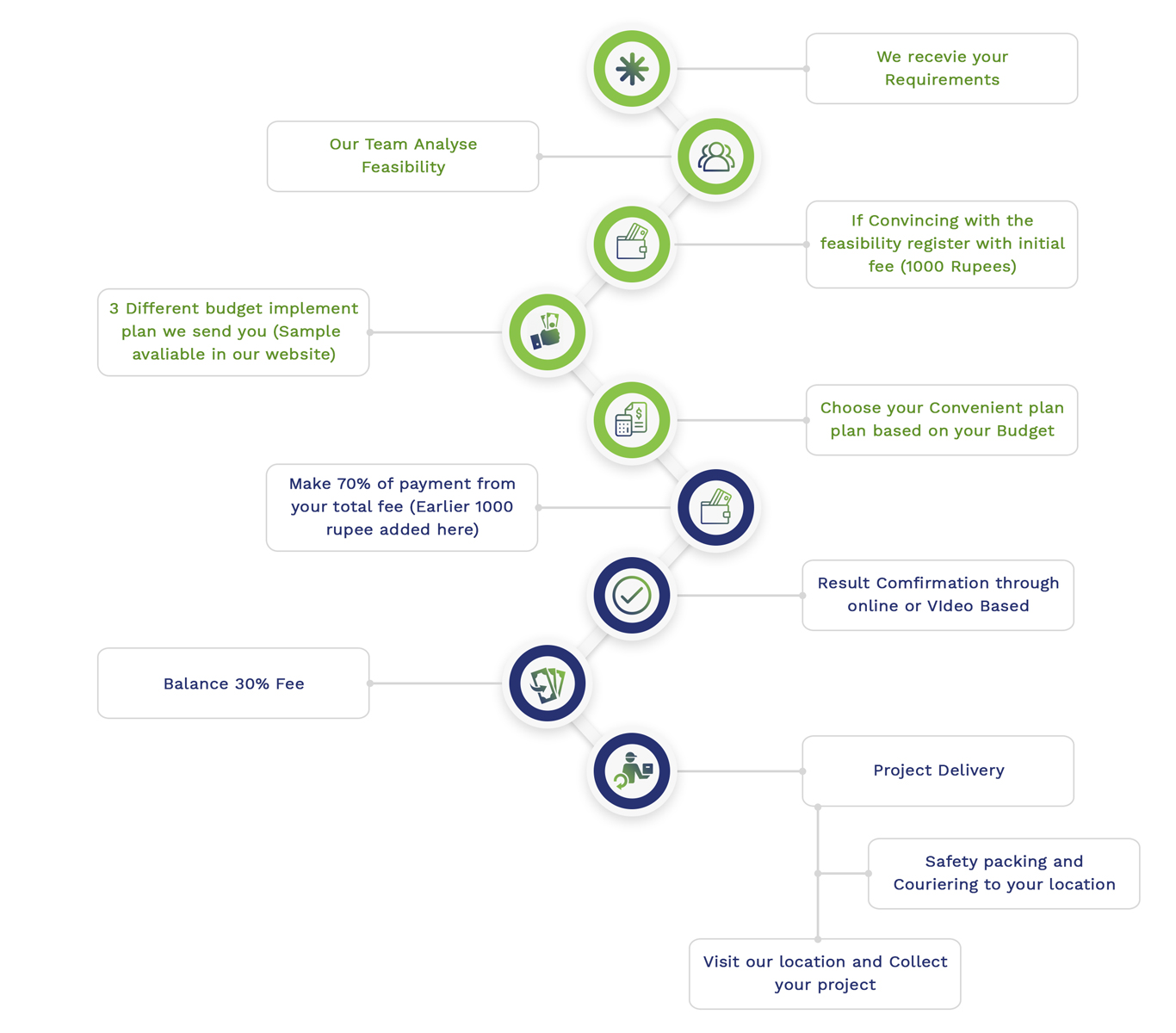Analysis and Suppression of High Order Mode Oscillation
High-order mode oscillation occurred in an S-band experimental klystron with 300 MHz instantaneous bandwidth. The cause of the oscillation was analyzed and simulated. A method was proposed to suppress the oscillation through adjusting the structure and size of a resonant cavity in the tube, in which the high-order mode frequency can obviously be changed and the variation of the fundamental mode frequency is very small.
Improved designs for the resonant cavity with Ansoft HFSS code and corresponding experiment have been performed, which shows that the simulation results are in good agreement with the experimental measurements. The testing result of an experimental klystron with this improved resonant cavity indicates that the high-order mode oscillation can effectively be suppressed.
Related Communication System Project Titles:
- Automated Demand Response From Home Energy Management System Under Dynamic Pricing and Powerand Comfort Constraints.
- Circulating Current Suppressing Strategy for MMC-HVDC Based on Nonideal Proportional Resonant Controllers Under Unbalanced Grid Conditions.
- Primary-Side Peak Current Measurement Strategy for High-Precision Constant Output Current Control.
- Approach for torque ripple reduction for brushless DC motor based on three-level neutral-point-clamped inverter with DC–DC converter.
- A Nonresonant Self-Synchronizing Inductively Coupled 0.18- $mu $ m CMOS Power Receiver and Charger.
- Predictive Torque Control Scheme for Three-Phase Four-Switch Inverter-Fed Induction Motor Drives With DC-Link Voltages Offset Suppression.
- Control and Monitoring for Grid-Friendly Wind Turbines: Research Overview and Suggested Approach.
- Speed sensor-less maximum power point tracking and constant output power operation of wind-driven wound rotor induction generators.
- A High Step-Down Multiple Output Converter With Wide Input Voltage Range Based on Quasi Two-Stage Architecture and Dual-Output LLC Resonant Converter.
Subscribe Our Youtube Channel
You can Watch all Subjects Matlab & Simulink latest Innovative Project Results
Our services
We want to support Uncompromise Matlab service for all your Requirements Our Reseachers and Technical team keep update the technology for all subjects ,We assure We Meet out Your Needs.
Our Services
- Matlab Research Paper Help
- Matlab assignment help
- Matlab Project Help
- Matlab Homework Help
- Simulink assignment help
- Simulink Project Help
- Simulink Homework Help
- Matlab Research Paper Help
- NS3 Research Paper Help
- Omnet++ Research Paper Help
Our Benefits
- Customised Matlab Assignments
- Global Assignment Knowledge
- Best Assignment Writers
- Certified Matlab Trainers
- Experienced Matlab Developers
- Over 400k+ Satisfied Students
- Ontime support
- Best Price Guarantee
- Plagiarism Free Work
- Correct Citations
Expert Matlab services just 1-click

Delivery Materials
Unlimited support we offer you
For better understanding purpose we provide following Materials for all Kind of Research & Assignment & Homework service.
 Programs
Programs Designs
Designs Simulations
Simulations Results
Results Graphs
Graphs Result snapshot
Result snapshot Video Tutorial
Video Tutorial Instructions Profile
Instructions Profile  Sofware Install Guide
Sofware Install Guide Execution Guidance
Execution Guidance  Explanations
Explanations Implement Plan
Implement Plan
Matlab Projects
Matlab projects innovators has laid our steps in all dimension related to math works.Our concern support matlab projects for more than 10 years.Many Research scholars are benefited by our matlab projects service.We are trusted institution who supplies matlab projects for many universities and colleges.
Reasons to choose Matlab Projects .org???
Our Service are widely utilized by Research centers.More than 5000+ Projects & Thesis has been provided by us to Students & Research Scholars. All current mathworks software versions are being updated by us.
Our concern has provided the required solution for all the above mention technical problems required by clients with best Customer Support.
- Novel Idea
- Ontime Delivery
- Best Prices
- Unique Work
Simulation Projects Workflow

Embedded Projects Workflow



 Matlab
Matlab Simulink
Simulink NS3
NS3 OMNET++
OMNET++ COOJA
COOJA CONTIKI OS
CONTIKI OS NS2
NS2






